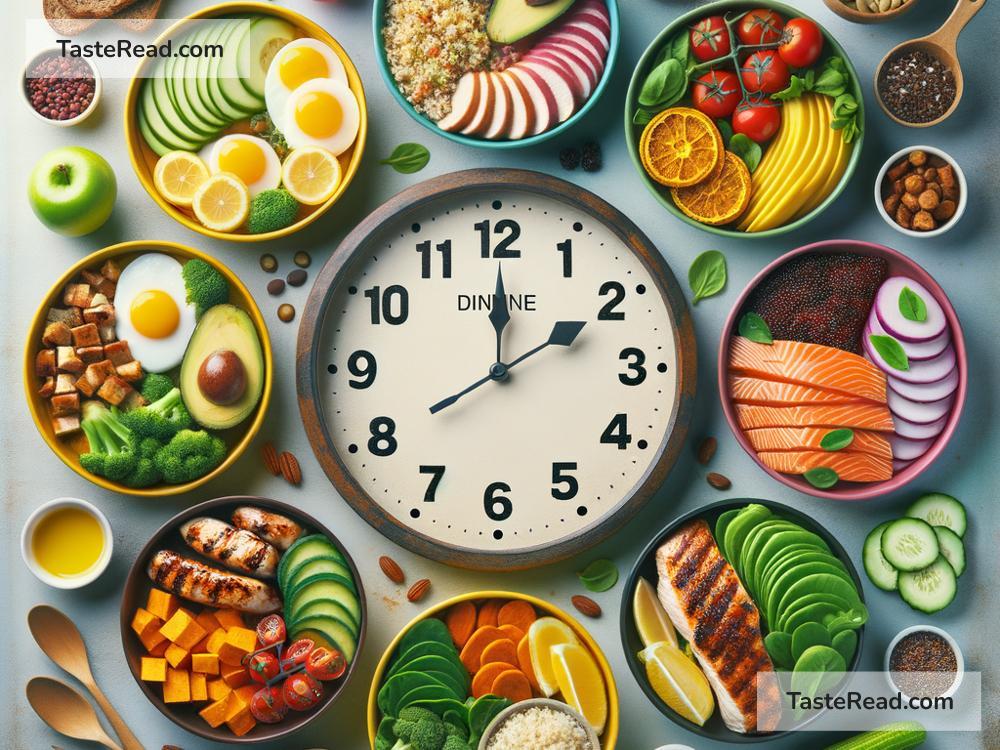Mastering Meal Timing: Best Foods to Keep You on Track
Meal timing might sound like a boring topic, but it’s one of the simplest ways to improve your energy, digestion, and overall health. It’s not just about what you eat—it’s also about when you eat. By eating meals at regular times and including the right kinds of foods, you can boost your metabolism, stabilize your blood sugar, and even improve your mood.
If you’re tired of feeling sluggish or dealing with random hunger pangs throughout the day, paying attention to meal timing can make a big difference. And guess what? It doesn’t have to be complicated. In this blog post, we’ll explore foods that help keep you full longer, give you steady energy, and are great companions for creating healthy meal schedules.
Why Meal Timing Matters
Your body has an inner clock, also known as your circadian rhythm. This clock affects how your metabolism works, when you feel hungry, and even how well your body uses the nutrients from food. Eating meals at consistent times helps your body stay in sync with this natural rhythm. Irregular eating can throw it off, leading to fatigue, low energy, and overeating.
By combining meal timing with helpful foods, you can stay energized and avoid those mid-day crashes.
Foods to Improve Meal Timing
Some foods are especially useful for meal timing because they digest slowly, boost energy, and help you feel satisfied for longer periods. Here are the top categories of foods to include in your diet to make meal timing work for you:
1. High-Protein Foods
Protein is essential for keeping you full. It takes longer for your body to digest compared to carbs, which means you won’t feel hungry again right after eating. Including proteins in every meal can help you stick to regular meal times because you won’t be reaching for snacks between meals.
Examples of High-Protein Foods:
– Eggs (great for breakfast)
– Lean meats like chicken, turkey, or fish
– Plant-based proteins like tofu, tempeh, or beans
– Greek yogurt or cottage cheese
– Nuts and seeds (in moderation)
Start your day with a protein-packed breakfast, like scrambled eggs or a bowl of Greek yogurt, to start your morning on the right foot.
2. Fiber-Rich Foods
Fiber is another key nutrient that helps you stay full for hours after eating. Foods high in fiber support digestion and keep your blood sugar steady, preventing the spike-and-drop effect that can lead to hunger and fatigue. Including fiber in every meal helps you stick to your meal schedule without cravings.
Examples of Fiber-Rich Foods:
– Whole grains like oats, quinoa, and brown rice
– Fruits like apples, berries, and oranges
– Vegetables like broccoli, spinach, carrots, and bell peppers
– Legumes like lentils, chickpeas, and black beans
For lunch, try a hearty salad with leafy greens, beans, and some roasted veggies to give you sustained energy until dinner.
3. Healthy Fats
Healthy fats are another nutrient that supports meal timing because they make meals satisfying and help with energy. Plus, fats provide long-lasting energy that your body uses slowly over time. This can help you avoid feeling hungry again too soon after a meal.
Examples of Healthy Fats:
– Avocados
– Olive oil
– Nuts and seeds
– Fatty fish like salmon and mackerel
– Nut butters (look for ones without added sugar)
Add avocado to your toast in the morning, or drizzle some olive oil over your veggies at dinner to help stay on track.
4. Complex Carbohydrates
Complex carbs are perfect for balancing meal timing because they digest slowly and provide long-lasting energy. Unlike sugary snacks or simple carbs (like white bread), they won’t leave you feeling hungry an hour later. Pair complex carbs with protein and healthy fats to create balanced meals that help you stay on schedule.
Examples of Complex Carbohydrates:
– Sweet potatoes
– Whole-grain bread or pasta
– Brown rice
– Rolled oats
– Squash
Swap out white rice for brown rice or switch to whole-grain bread to make your meals more filling and stabilizing.
5. Hydrating Foods
Dehydration often feels like hunger, and it can mess with your meal timing goals. Including foods with a high water content can help you stay hydrated while feeling full and satisfied.
Examples of Hydrating Foods:
– Cucumbers
– Watermelon
– Zucchini
– Strawberries
– Celery
Pair hydrating foods with your snacks or meals, especially during warmer months when you’re more likely to get dehydrated.
Tips for Sticking to Meal Timing
Now that you know the best foods to help with meal timing, here are a few simple tips to make it easier to follow a schedule:
- Plan Ahead: Prep your meals or have ingredients ready so you’re not scrambling last minute.
- Eat Breakfast: Starting your day with a balanced breakfast can set the tone for better meal timing throughout the day.
- Avoid Late-Night Eating: Eating heavy meals late at night can disrupt your circadian rhythm. Aim to finish dinner at least 2-3 hours before bedtime.
Final Thoughts
Improving your meal timing with the right foods doesn’t have to be hard. Start by creating balanced meals with protein, fiber, healthy fats, and complex carbs, then stick to a schedule that works for you. Add hydrating foods throughout the day to stay energized and avoid mistaking thirst for hunger.
Over time, you’ll notice that steady meal timing—and the right foods—can improve your energy levels and make daily life feel a lot smoother. Give it a try and see the difference!


